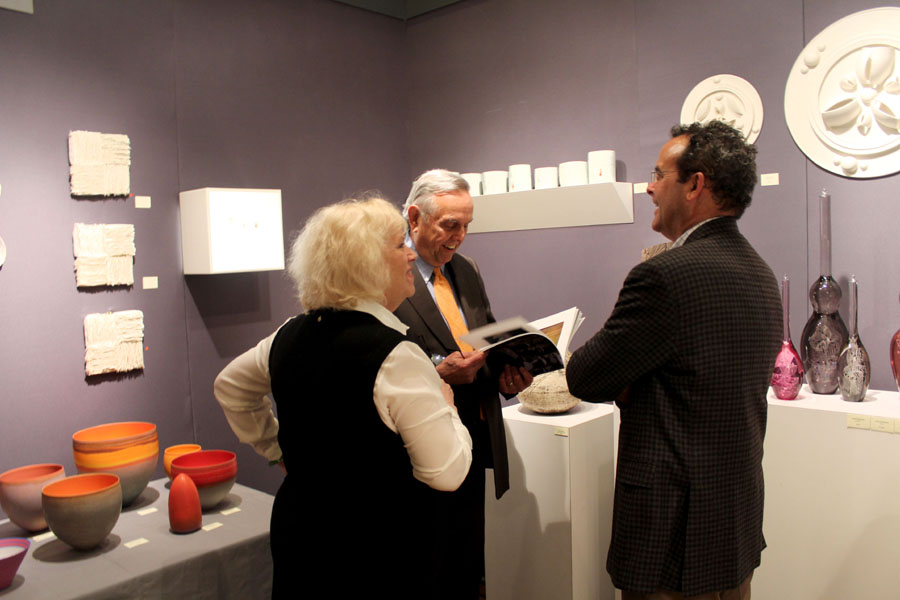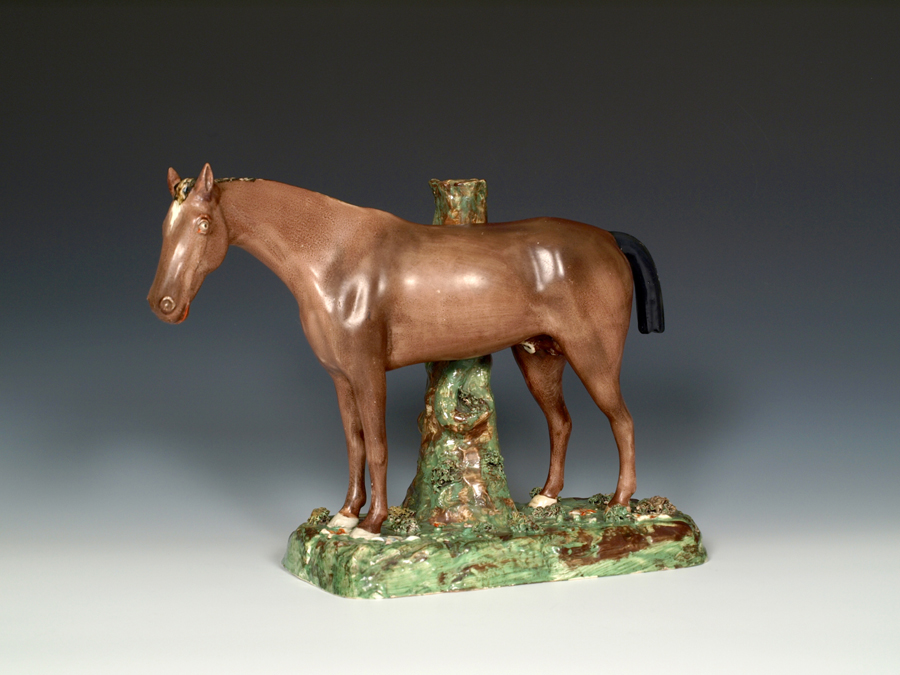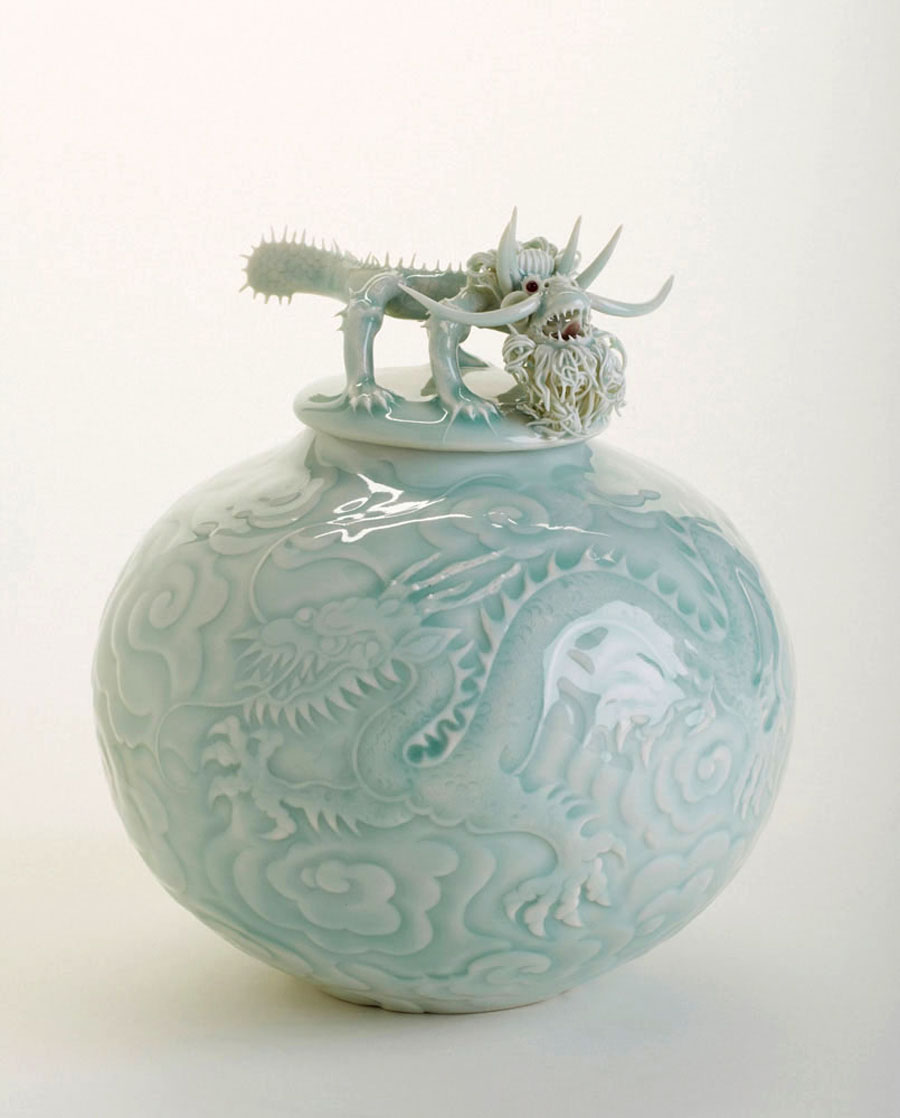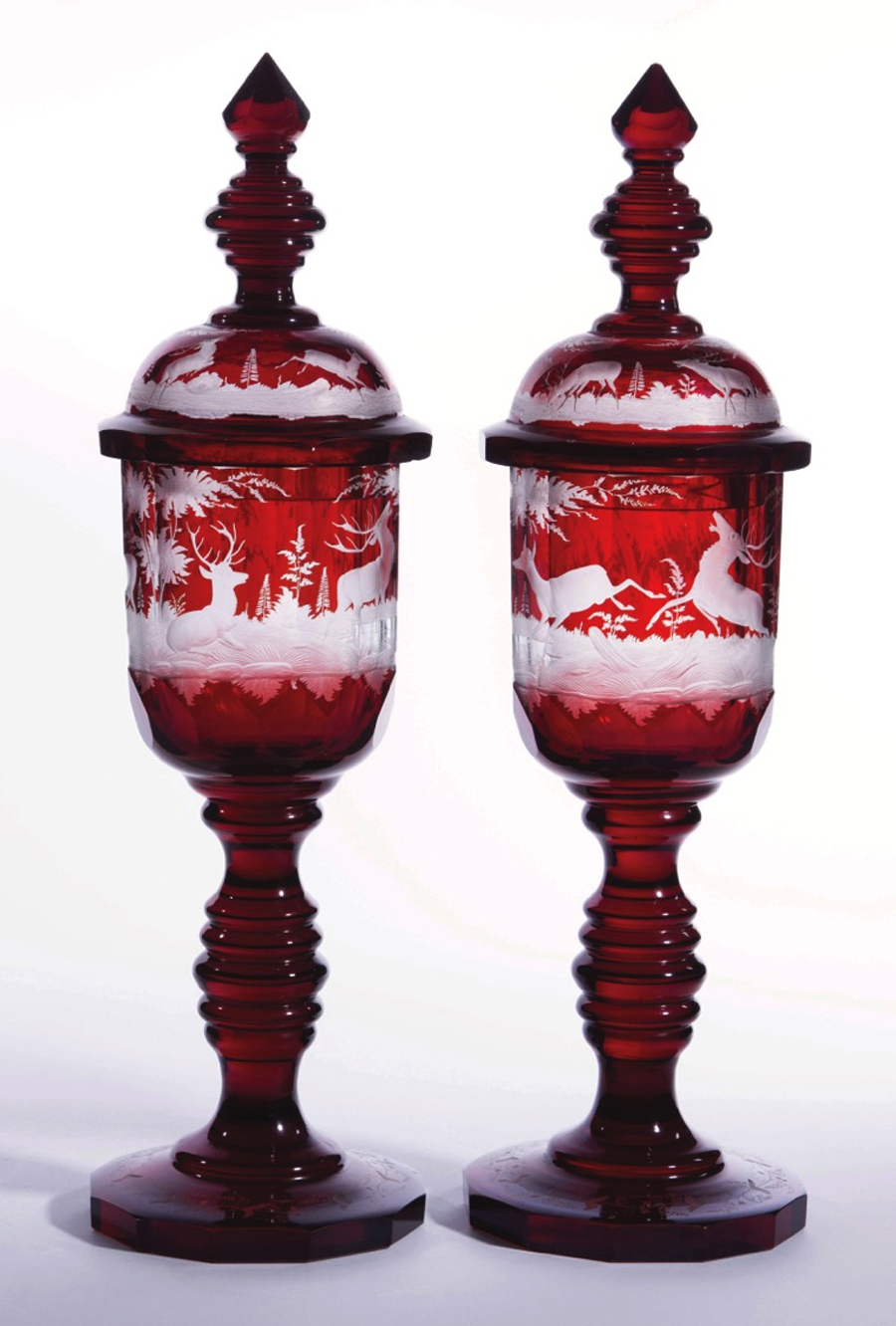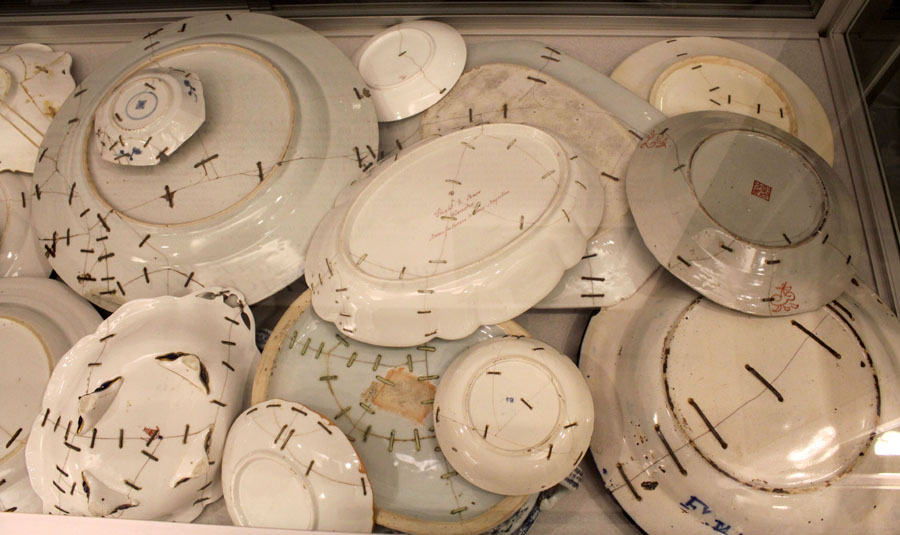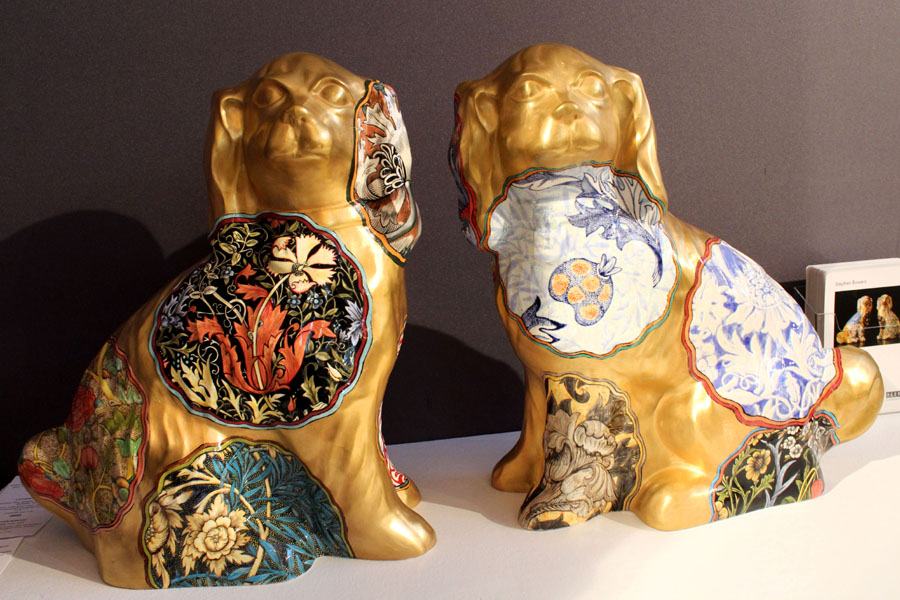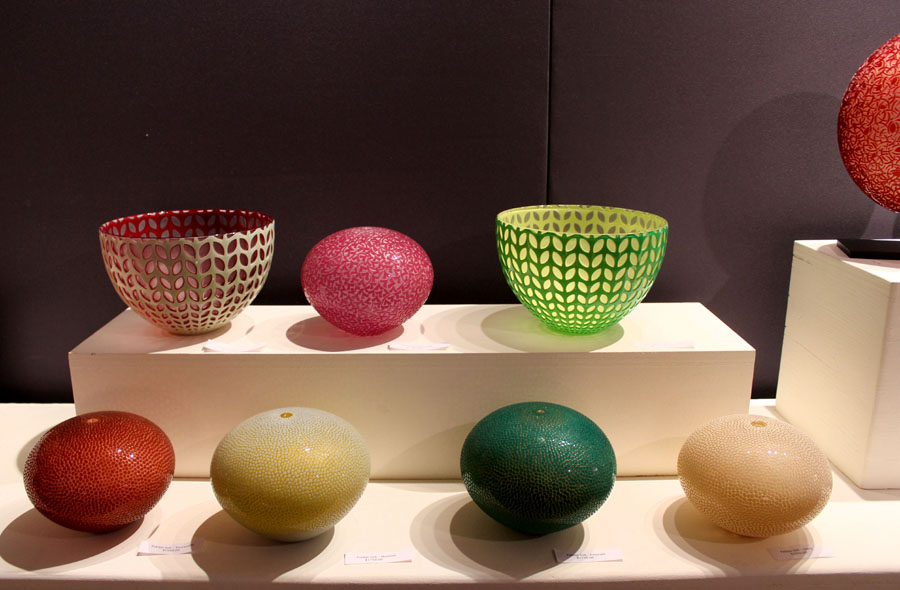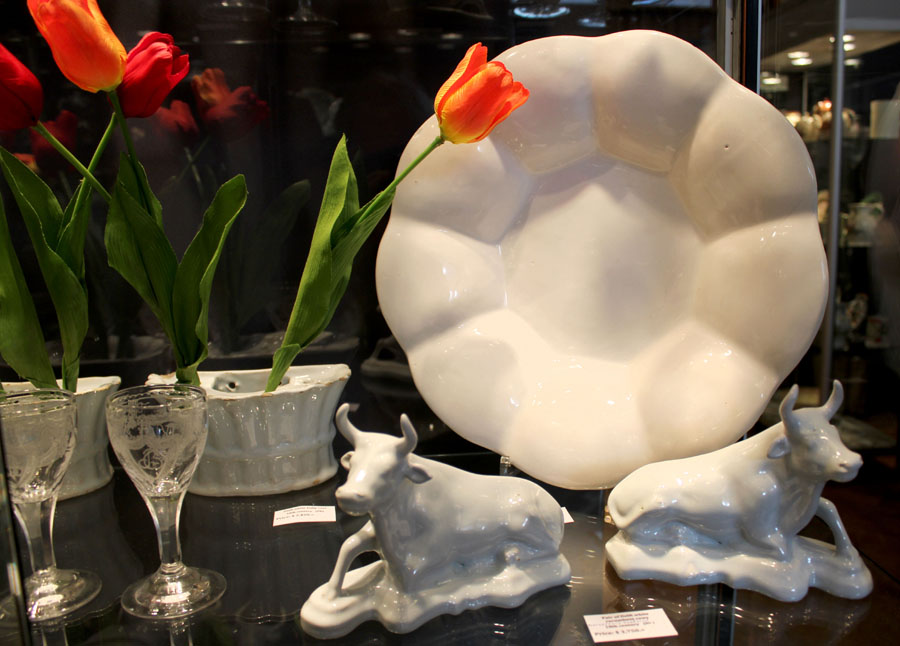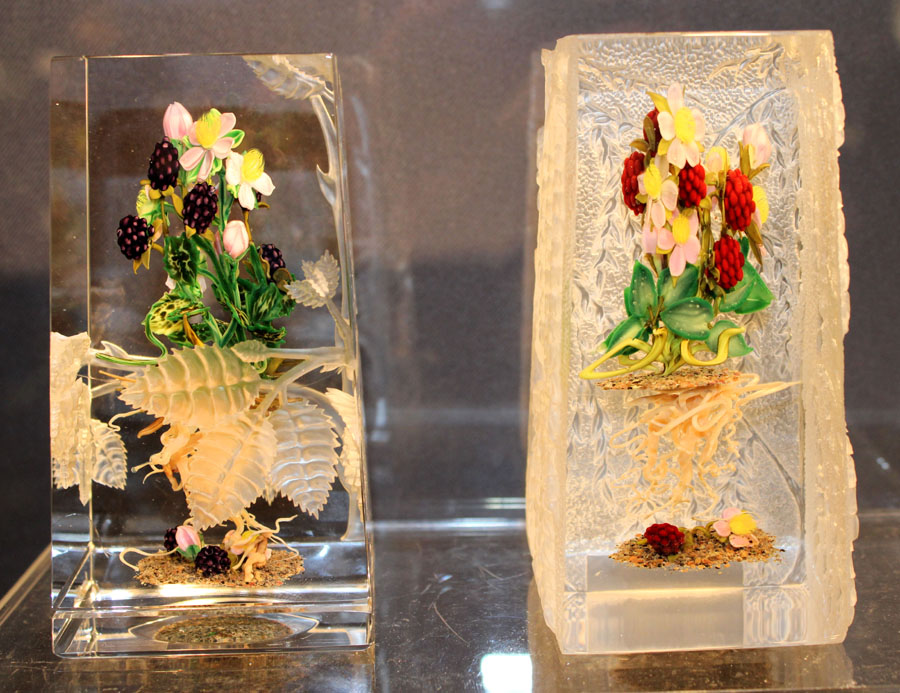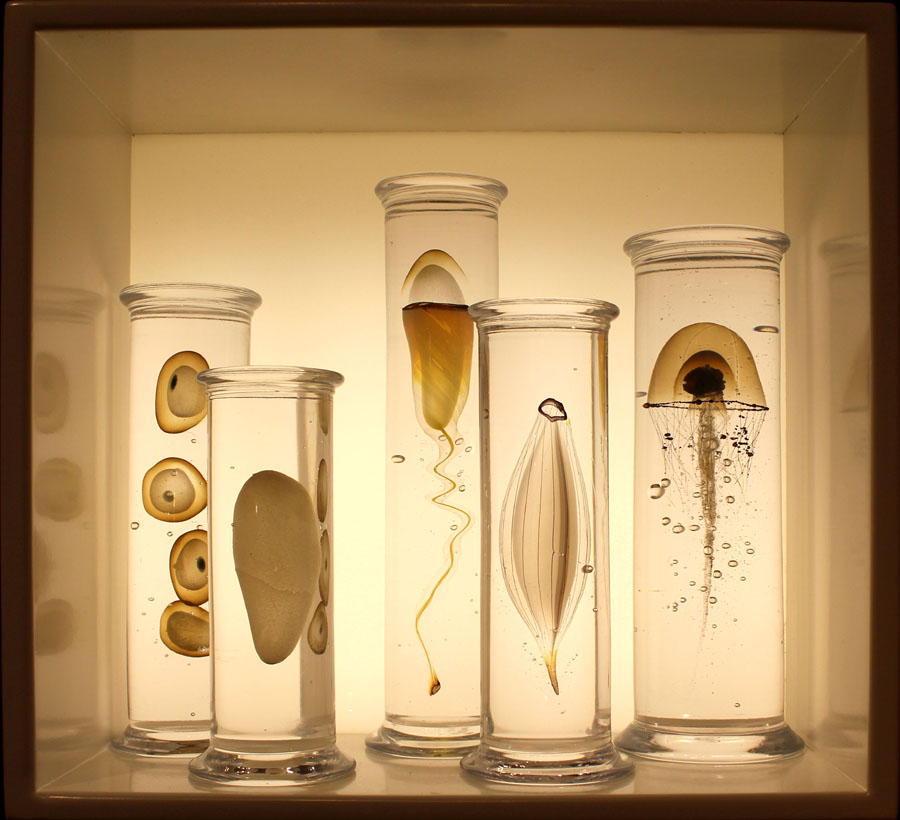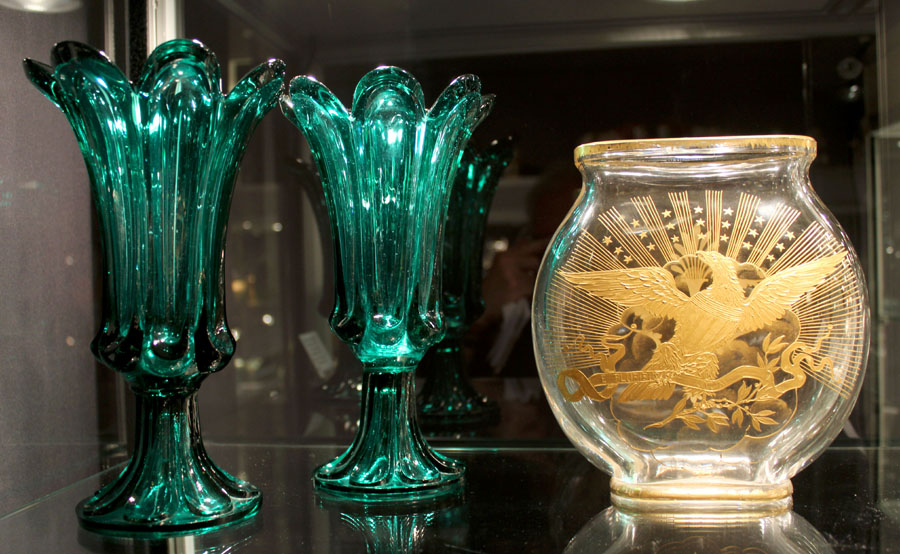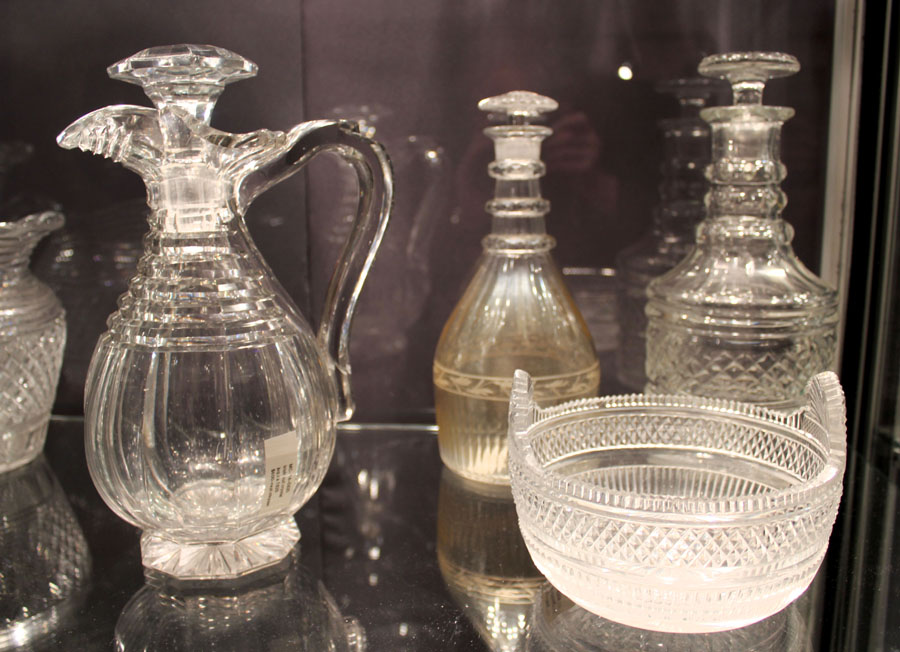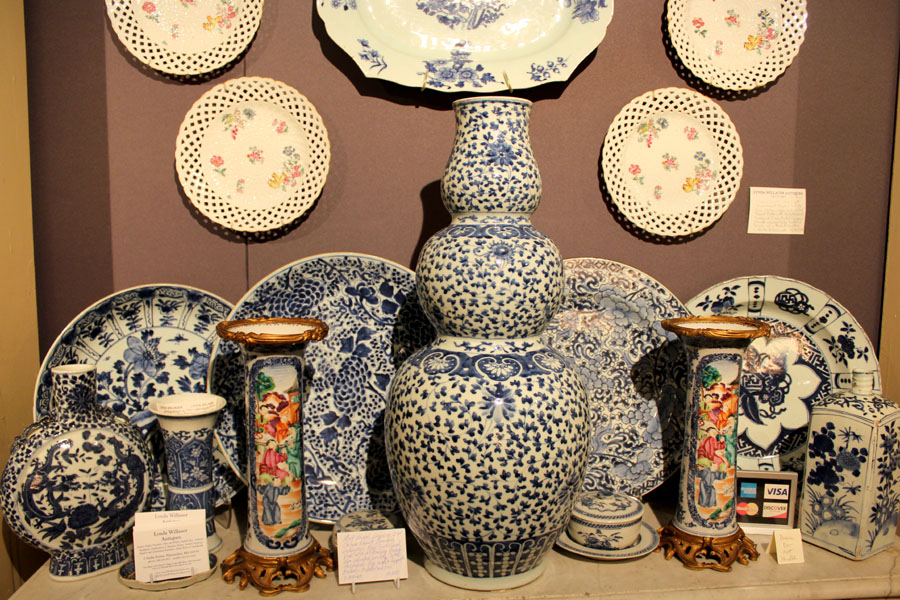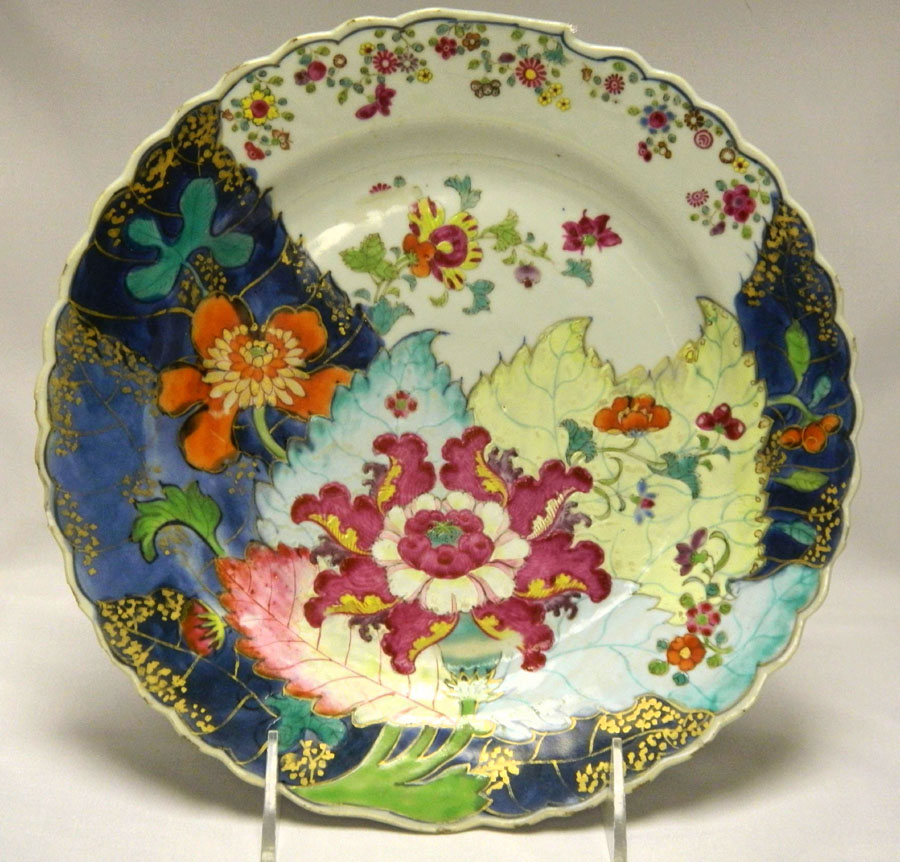‘Jewel In The Crown’ Of Americana Week
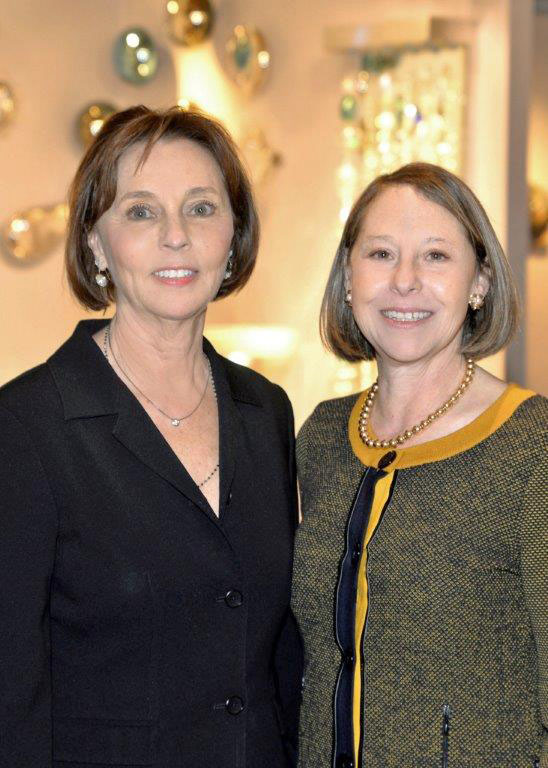
Show promoters Liz Lees, left, and Meg Wendy gathered an international roster of 30 galleries, dealers and artists for the 2016 edition of the New York Ceramics & Glass Fair.
Review and Photos by W.A. Demers
NEW YORK CITY — For English pottery specialist Garry Atkins, the formula for success at any show is simple — “If I can find good things, I can sell them!” he said. Then the London dealer qualified his observation. “The problem is finding them every year.” At this year’s edition of the New York Ceramics & Glass Fair, a four-day showcase of the best in this category conducted at Bohemian National Hall from January 21–24, Atkins successfully found both the right merchandise and the right buyers. At the show’s gala preview on the evening of January 20, Atkins immediately sold a monumental pair of English delftware Bleu Persan vases, circa 1690, retrieved from the basement of England’s Warwick Castle.
To an institution, he also wrote up a rare large English delftware chinoiserie dish dated 1674 with two sets of initials, which he noted was most unusual. One of his favorite pieces on view was perhaps one of the oldest objects at the fair, a Fourteenth Century English drinking vessel with anthropomorphic features that may have been the genesis of face jugs. “Nearly all the new stock sold,” he reported. “I have been exhibiting at this fair since it started, and I am more than happy with the way it’s run, and the venue I think works well. The only problem was the weather and nobody can do anything about that!”
Yes, the fair, like many other events around the city over this particular weekend, had an unwelcome visitor in the form of Jonas, a powerful blizzard that tore up the Eastern seaboard, dumping significant amounts of snow across New York, New Jersey, Connecticut and Washington, D.C. It was the second-largest snowstorm on record in New York City’s history, bringing 26.8 inches to Central Park in Manhattan.
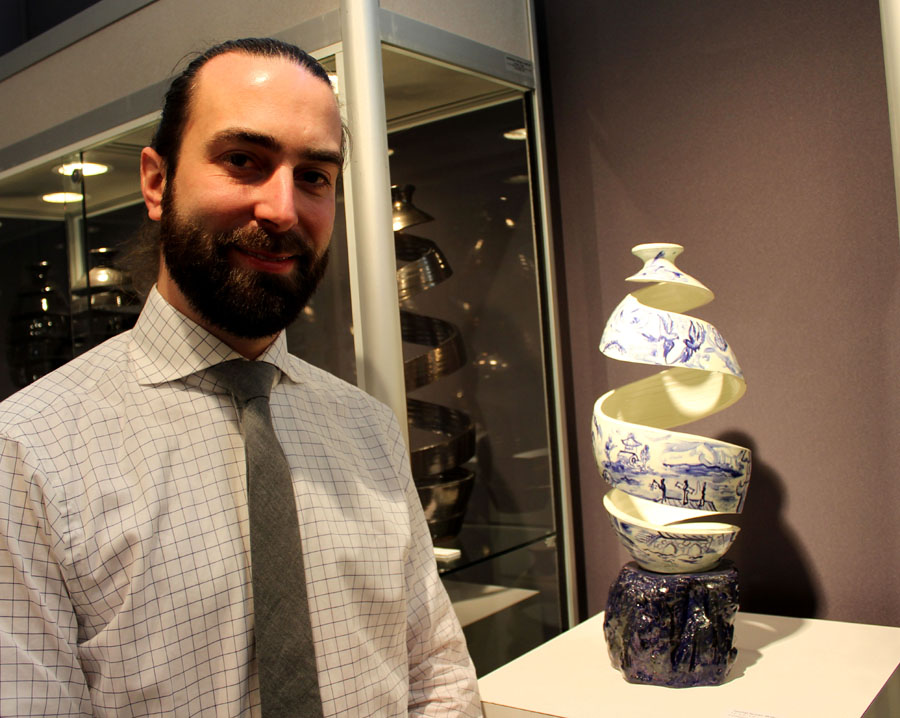
Porcelain artist Michael Boroniec from Lanesboro, Mass., sold several of his “Spatial Spiral” pieces over the course of the weekend. He creates the sculptural works by throwing them on the wheel and then carving them into open spirals.
Traffic, thus, was affected by Saturday’s blizzard, but intrepid collectors — with the impending storm on Friday concentrating their minds and Sunday’s calm after the storm sounding the transportation “all clear” — came to the show to claim prized pieces. The event is managed by Liz Lees and Meg Wendy and, having a solid reputation and an international clientele of both exhibitors and buyers, has been characterized as the “jewel in the crown” of Americana Week in New York.
Ascending to the fourth and fifth floor galleries at the hall, ceramics and glass fans were sure to notice the continuing evolution to include more contemporary and avant-garde works. Liz Lees, founder of the fair, and Meg Wendy appreciated the inroads that both contemporary creations and modern glass have made among collectors over the years and added “glass” to the fair’s title last year for the first time, and this year’s edition featured a half dozen contemporary artists and a couple of galleries.
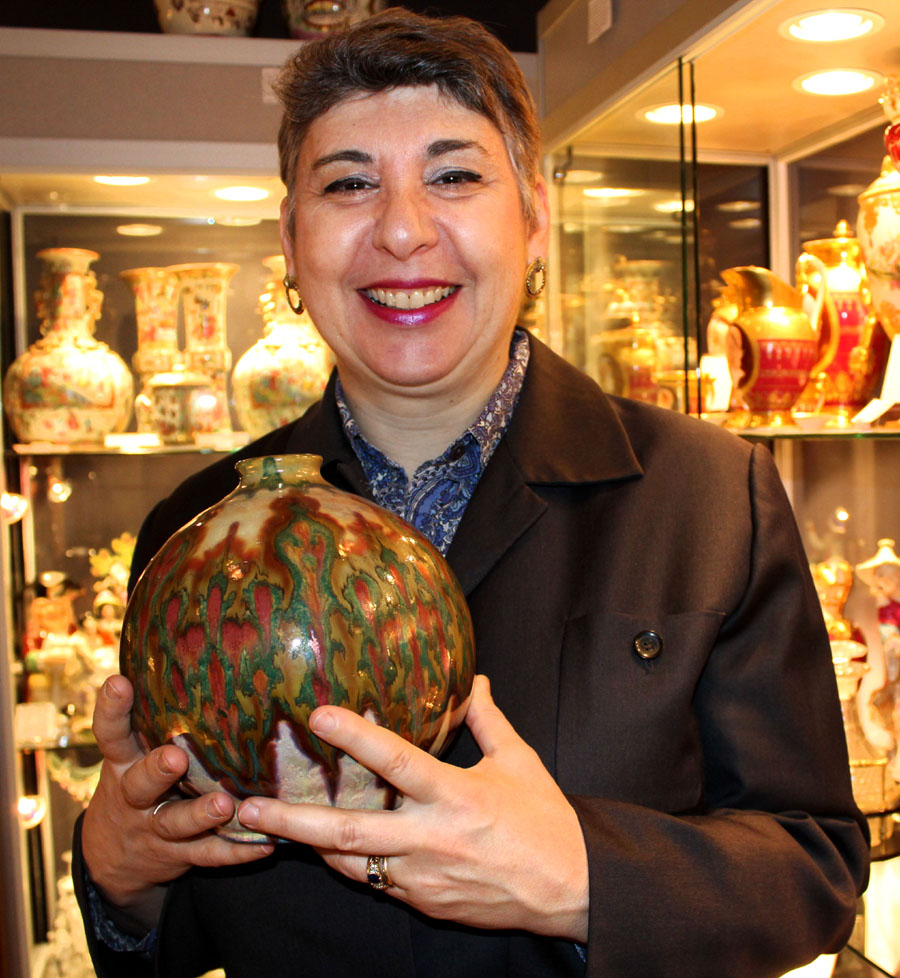
A riot of iridescent glazes erupted on the surface of this rare Gouda Midcentury Modern pottery globular vase in bargello bands of green, brown, ocher and red-orange. It was being shown by Jill Fenichell Bespoke Porcelain, Brooklyn, N.Y.
Joanna Bird Contemporary Collections was one such exhibitor. The London gallerist said the show was smaller and more intimate compared with the larger fairs her firm has participated in over the last 12 years in New York City and Chicago, in particular SOFA. “It was a new backdrop for us and the visitors — it being primarily an antique ceramic and glass fair — as we were the only other contemporary ceramics and glass dealers in the show apart from Leslie Ferrin.”
Bird found the crowd well informed, “some of whom we already knew as clients, but mainly new, enthusiastic and engaged visitors who loved the work we took, which was very different to anything else in the exhibition. We made some excellent new contacts with both collectors and curators from the museum world.”
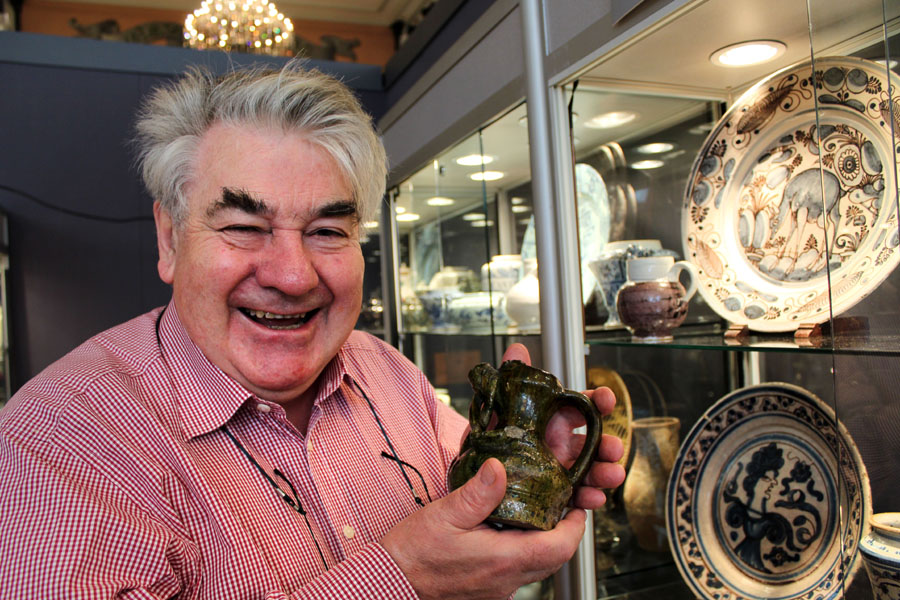
London dealer Garry Atkins was having a very successful show, but took a moment to show off one of the favorite pieces in his collection, a precursor to the face jug in the form of an English drinking vessel from around 1350.
Bird said she sold an important Edmund de Waal piece to a new client, “an erudite and discerning collector,” she said. “We also sold well from our emerging artists, Sara Dodd, in particular. Finally, the lecture series, which was inspired by Leslie Ferrin, was of a high standard and very interesting. In particular an outstanding contribution from Glenn Adamson, who presented his view of Peter Voulkos’ life and his important contribution to US ceramics during the 1950s–70s, titled ‘Demolition Man.’”
Traditional glass and pottery shared the spotlight. “We had our best-selling show since we started there four years ago,” said Jeffery S. Evens, who with his wife Beverly came to mainly network and promote their auction business in Mount Crawford, Va., “It is nice to make some sales to help offset the expenses, however,” he added. “Our biggest sale was an outstanding signed Dietz, New York cut-overlay glass kerosene lamp, circa 1860, complete with appropriate set-up. This sold to a New York City collector who came back on Friday to tell us he got it all set up at his home and was absolutely thrilled to add it to his collection. We also sold a fine Milburn, Alexandria, Va., stoneware 1-gallon jar with strong cobalt decoration to a collector from Dallas who used to live in Alexandria and was surprised to see an example in New York City. In addition, we sold some American flint pattern glass and a good number of reference books.”
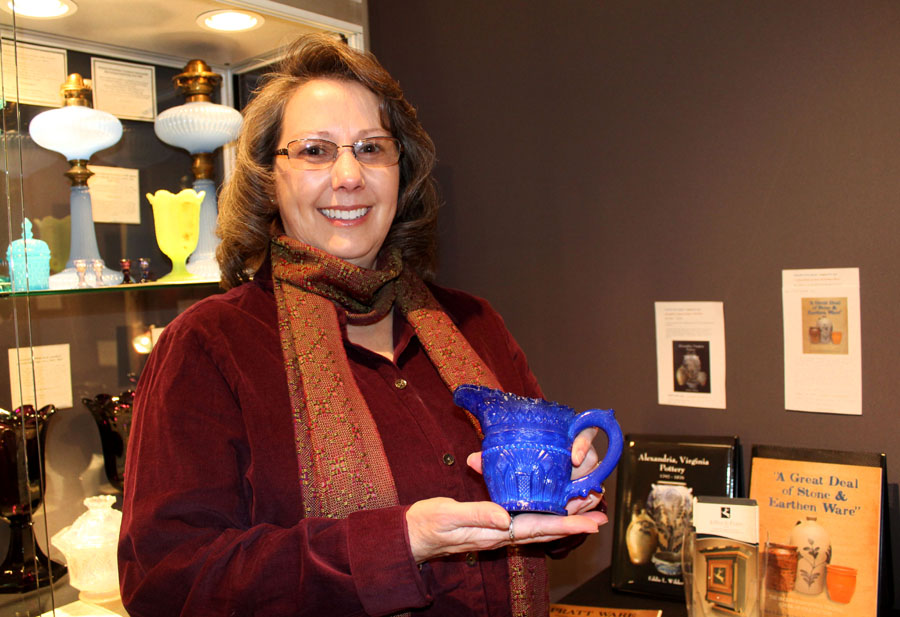
Jeff and Beverly Evans came to the fair mostly to network and promote their auction business Jeffrey S. Evans & Associates, Mount Crawford, Va. Their booth was filled, however, with many interesting items from their personal collection, such as the Boston Sandwich pressed glass lacy creamer, circa 1830, in a rare color being shown by Beverly.
Evans stated, “Everyone loves the venue, the space is great and the new walls this year made things more intimate without feeling boxed in. The promoters work hard to promote the show across a multitude of media. This included a nearly five-minute interview on a local television station and a big article in The New York Times. And they walk the floor talking with dealers and customers constantly. It is a class event that we are so pleased to be part of.”
Also exhibiting on the traditional side was Waccabuc, N.Y., dealer Robert Prescott Walker of Polka Dot Antiques. He filled his showcases with choice British pottery, late Eighteenth–early Nineteenth Century, and British art pottery. “The fair was probably the busiest I have seen it for a while, with the exception of the snow day,” he said. “In terms of the volume of items sold, the Whieldon-type wares — teapot and caddies — were the most popular, followed by the salt-glazed stoneware, Pratt ware and creamware. My most important piece of Staffordshire is going on purchase approval to a major New York museum.”
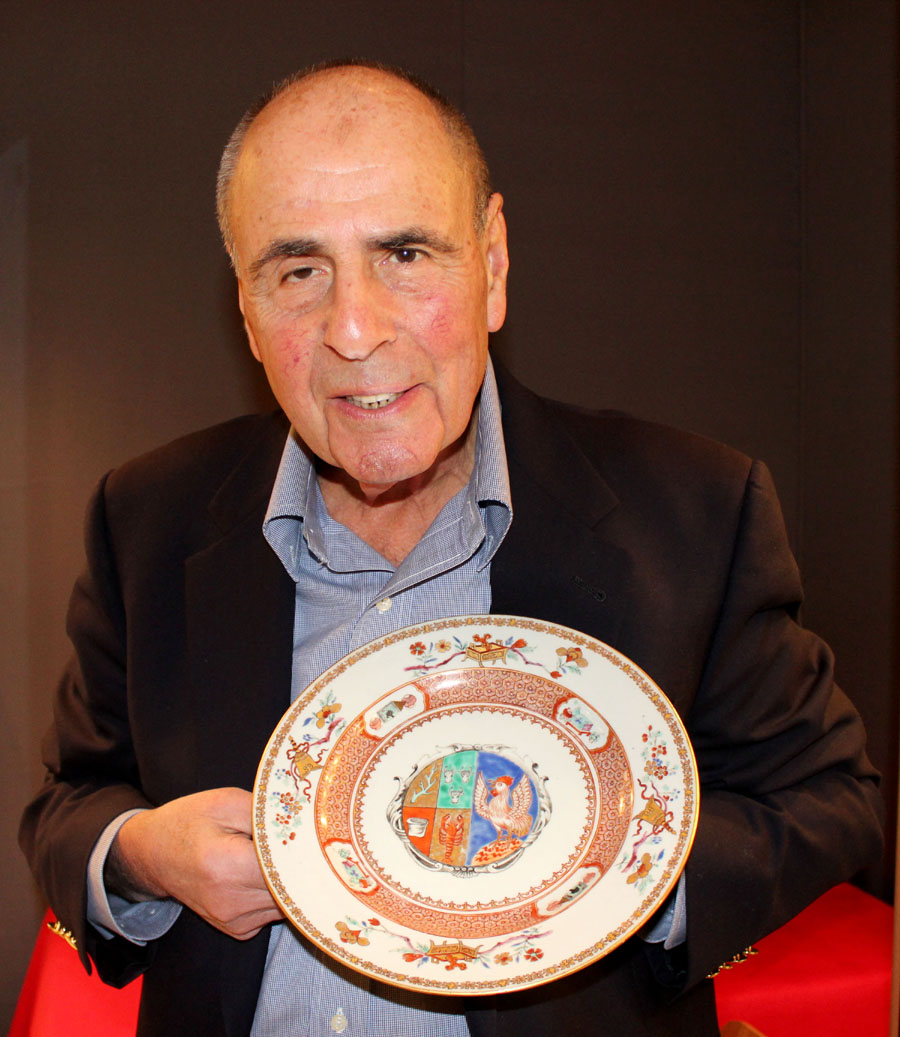
John Suval of Philip Suval Inc, Fredericksburg, Va., holds a wonderful armorial large plate from the China Trade dating to about 1725. He said it was made for two Dutch families, the decoration relating to their respective heraldries.
Porcelain artist Cliff Lee of Stevens, Penn., in the 1970s allowed his hobby “take over.” The former doctor worked diligently to recreate Chinese glazes long lost to history, spending 17 years to perfect the imperial yellow glaze that he applies to the vessels he forms from kaolin clay from England’s White Cliffs of Dover. Ultimately, in 1993 he was invited to contribute a piece of his work to the White House Collection of American Crafts, and his pieces are included in the permanent collections of the Smithsonian American Art Museum’s Renwick Gallery and the Metropolitan Museum of Art, among others.
At this show, he displayed about 25 pieces, including his classic teardrop forms, carved prickly melons and sculpted dragon forms. “They are all one of a kind,” he said, adding that it sometimes takes days to make just one piece because “there are good days and bad days. Fifty-percent of them don’t turn out.” A short while after the show, Lee was able to announce that a number of his works will be shown by British gallerist Cohen and Cohen at Maastricht, The Netherlands, March 13–22. In the United States, Lee’s next show is the Smithsonian Craft Show in April. And, of course, he intends to be back at the Ceramics & Glass Fair in New York City next year.
Another porcelain artist featured in the show was Michael Boroniec of Lanesboro, Mass., whose sculptural works carved into open spirals range from pure white to other surfaces created by inventive glazing techniques. Boroniec sold four of the “Spatial Spiral” pieces at preview and his firm was included in preshow press appearing in The New York Times, which he said he believed helped generate sales.
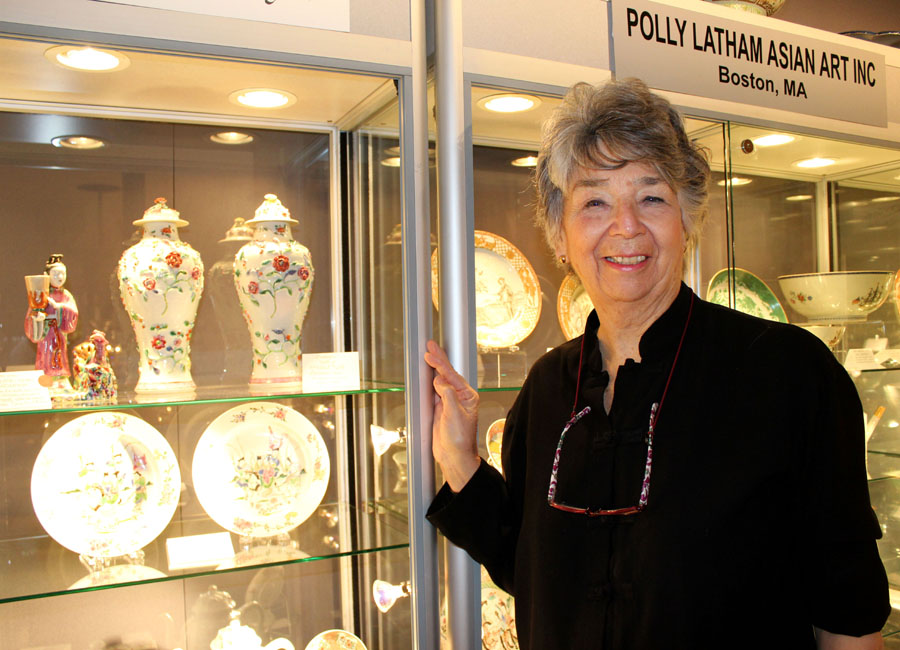
Polly Latham specializes in Chinese export porcelain. The Boston dealer brought many fine pieces that she displayed on the second floor of the fair.
“The clientele ranged from top-tier designers, ceramic enthusiasts and serious collectors,” he said. “There was something for everyone. The mixture between contemporary artist and antiquities of all things fired made for a survey of artworks dating from the Fourteenth Century to the Twenty-First Century. And once the driving ban was lifted following Saturday’s storm, people were ready to shop on Sunday.”
Boroniec reported strong sales. “My works ranged from $1,600 to $7,000 and we sold approximately half of the 40 pieces we displayed. If the snow hadn’t happened, I firmly believe we would have had a sold-out show. We received large installation commissions and many opportunities with interior design firms. Our largest final sale at the fair was $3,600 for ‘Spatial Spiral; Stingray II,’ 2015.”
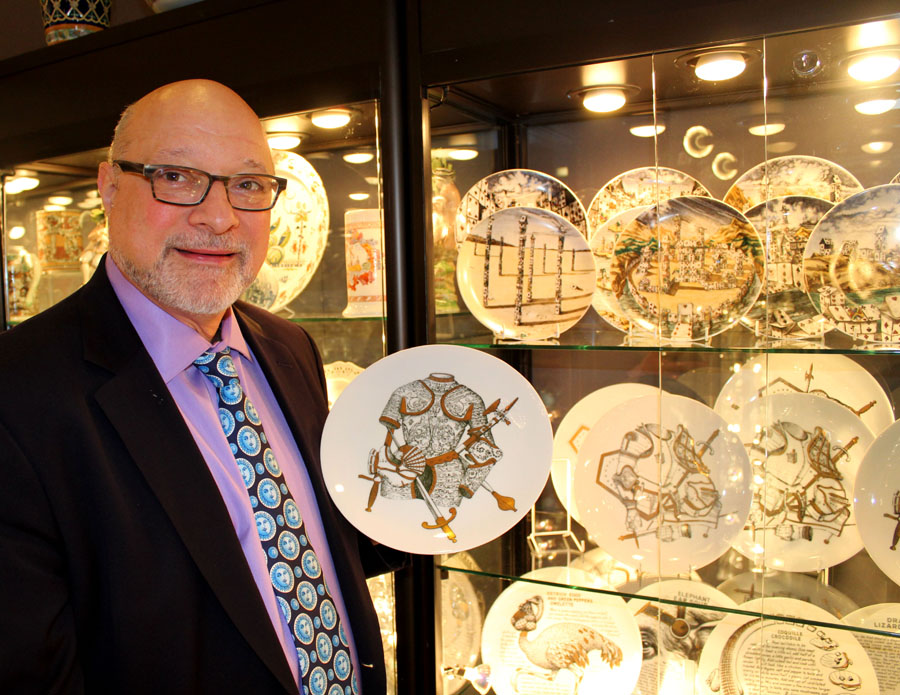
Fornasetti enthusiasts found much to like in the booth of Earl D. Vandekar of Knightsbridge, Maryknoll, N.Y. Here dealer Paul Vandekar holds up an example from the artist’s coats of armor series.
Artist Carrie Gustafson of Cambridge, Mass., tended a colorful “garden” of naturalistic sculptural pieces in the upper gallery of the show. “I was extremely nervous before attending the fair, given that contemporary work is still in its ‘infancy’ to this particular audience, but I heard repeatedly from attendees how ‘fresh’ and ‘exciting’ the contemporary work looked, giving a new ‘flair’ to an already renowned show,” she said. “For those of us exhibiting contemporary craft, it was an extraordinary experience to have our work seen by an audience with a high appreciation for detail and an unmeasured understanding of the history of decorative arts. I also loved the intimacy of the show and could easily see this New York Ceramics & Glass Fair becoming the coveted showcase for contemporary craft once the ‘buzz’ spreads!”
Some people may remember Brooklyn, N.Y. dealer Jill Fenichell as an Eighteenth Century English porcelain or Nineteenth Century English or French pottery or porcelain dealer. Her stock for this show was quite different — ranging from a riotously iridescent glazed Gouda Midcentury Modern pottery globular vase to Dale Chihuly (American, b 1941) nesting bowl glass sculptures to Bohemian glass goblets and French Sevres vases. “I love the fair, that it goes right up to the present day is wonderful for me,” said Fenichell. “I sold a very fine pair of Bohemian beaker vases and few other things. I visited with some curators, which is always nice, and I also saw some old clients. Many of my best clients were going to come to the fair on Saturday, but were not able to. I wish we could have a do-over!”
“I understand when that happens,” Meg Wendy commiserated. “You lose your suburban clients, but, overall we were very pleased with the show. We had great opening night attendance, including museum curators, standing-room-only lectures and the buying was excellent.”
The show returns here next January during Americana week, and hopefully, blizzards will stay out to sea. For information, 310-305-4543 or www.newyorkceramicsandglassfair.com.
Gallery

